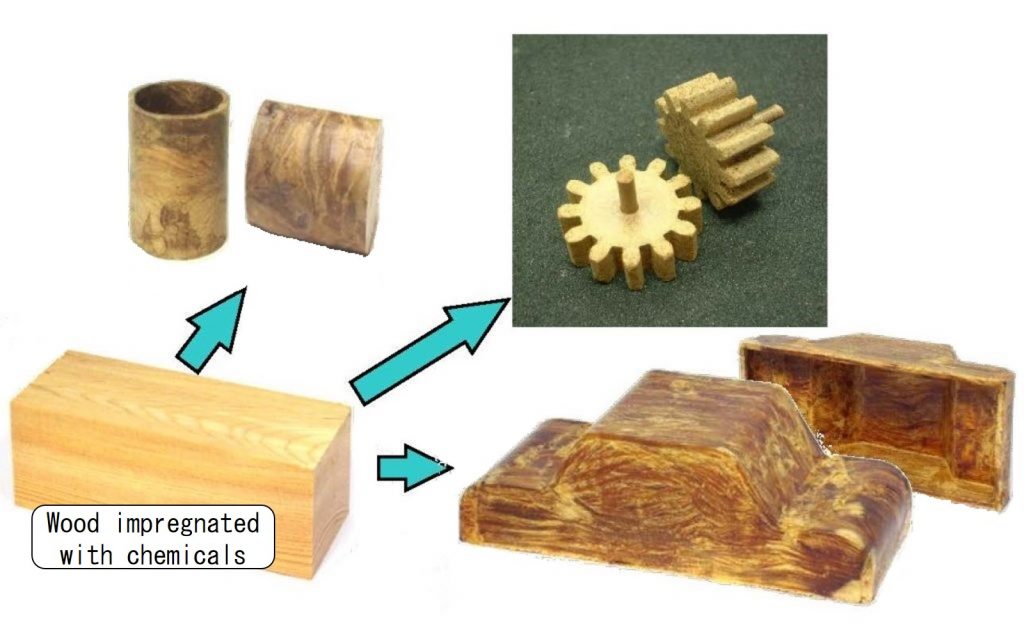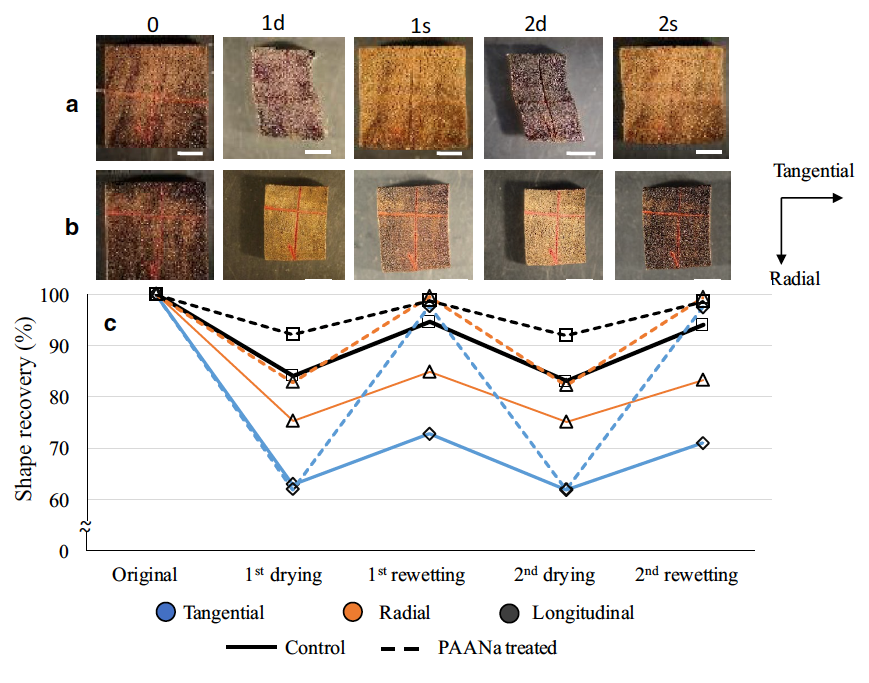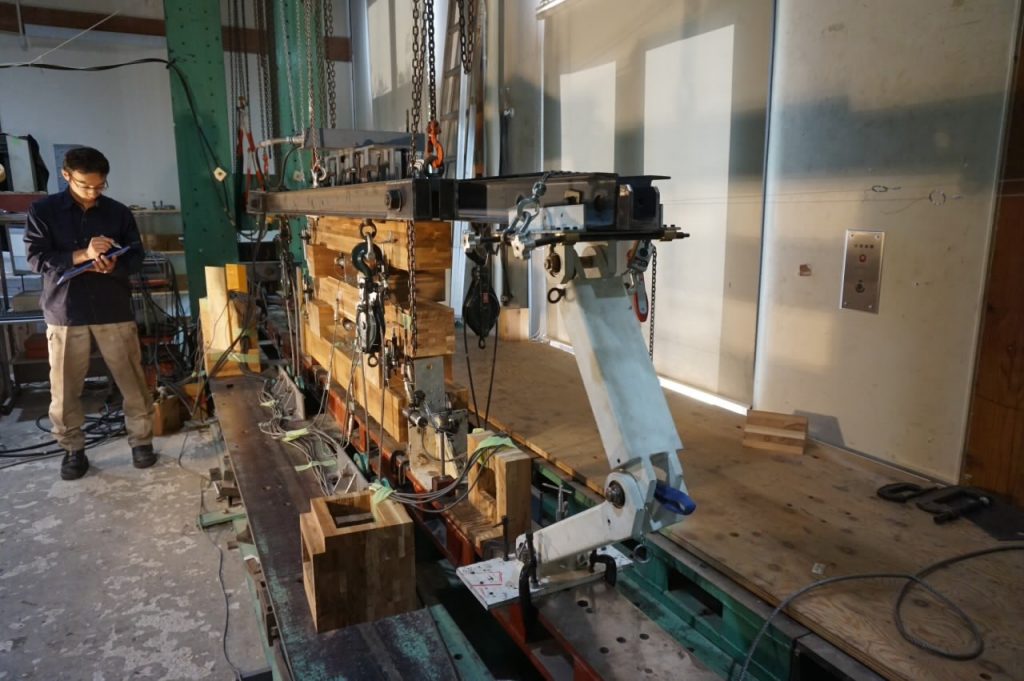2017 Activity Report for Mission5-4: Scientific Research on Wood Selection and its Contribution to Society: Wooden Architecture, Living Environments, Wood Resources/Databases, and Transition of Usage
Updated: 2018/06/20
Research 1: Investigation of wood information in East Asia (Junji Sugiyama et al.)
Our wood-based resource culture has been strongly influenced by East Asian countries. Exchanging information with neighboring countries opens a new horizon for understanding mutual relationships. Ph. D student Mr. Nguyen Duc Thanh graduated from the Graduate School of Agriculture, and accomplished his thesis work entitled “Study on conservation of archaeological waterlogged wood in Vietnam”. He works now at Research Institute of Forest Industry, Vietnamese Academy of Forest Science, as the first specialist of wood preservation.
Research Activities
- Traditional wood selection in Japan.
- Investigation of wood culture in East Asia.
- Preservation and identification of waterlogged wood.
Fig. The simultaneous in situ polymerization and crosslinking sodium polyacrylate (PAANa) in the wood structure allows providing extraordinary recovery upon the repeated cycle of drying and wetting (from Journal of Wood Science https://doi.org/10.1007/s10086-018-1696-x)
Award
Mr. Hairi Cipta was awarded the Best Student Oral Presentation Award at the 9th Pacific Regional Wood Anatomy conference at the 9th PRWAC held in Bali, Indonesia, September 2017.
Publications, etc.
- Nguyen T.D, Kohdzuma Y, Endo R, Sugiyama J (2018) “Evaluation of chemical treatments on dimensional stabilization of archaeological waterlogged hardwoods obtained from the Thang Long Imperial Citadel site, Vietnam” Journal of Wood Science. DOI: 10.1007/s10086-018-1719-7
- Nguyen T.D, Nishimura H, Imai T, Watanabe T, Kohdzuma Y, Sugiyama J (2018) “Natural durability of the culturally and historically important timber: Erythrophleum fordii wood against white-rot fungi” Journal of Wood Science. DOI: 10.1007/s10086-018-1704-1
- Nguyen T.D, Sakakibara K, Imai T, Tsujii Y, Kohdzuma Y, Sugiyama J (2017) “Shrinkage and swelling behavior of archaeological waterlogged wood preserved with slightly crosslinked sodium polyacrylate” Journal of Wood Science. DOI: 10.1007/s10086-018-1696-x
- Nguyen Duc Thanh, Hiroshi Nishimura, Tomoya Imai, Takashi Watanabe, Yohsei Kohdzuma, Junji Sugiyama (2018) Natural durability of the culturally and historically important timber – Erythrophleum fordii wood against white-rot fungi. Journal of Wood Science (Accepted)
- Hairi Cipta, Widyanto Dwi Nugroho, Suyako Tazuru, Junji Sugiyama, Identification of wooden keris sheath using synchrotron X-ray microtomography, The 67th Annual Meeting of JWRS (March 2017, Fukuoka)
- Hairi Cipta, Suyako Tazuru, Junji Sugiyama, Visualizing tile cells on Kleinhovia hospita by means X – ray microtomography, The 2nd ARN Symposium (July 2017, Kyoto)
- Hairi Cipta, Kayoko Kobayashi, Widyanto Dwi Nugroho, Suyako Tazuru, Junji Sugiyama Utilization of synchrotron X-ray microtomography to analyze anatomical features of wooden keris sheath ,The 9th PRWAC 2017 (September 2017, Bali)
Research 2: Dendroclimatology in equatorial regions (Suyako Tazuru et al.)
Dendroclimatology in equatorial regions
We will apply the analysis techniques of dendroclimatology, such as the tree growth rate and isotope analysis, to tropical trees. We are conducting surveys of Teak and Sungkai disk samples that produce annual tree rings, in collaboration with LIPI and FOERDIA.
Research Activities
- Collection of tropical wood samples.
- Construct analytical methods of ring-width and isotope ratios.
- Measurement of ring-width and isotopic components.
Publications, etc.
Harada, M., Watanabe, Y., Nakatsuka, T., Tazuru-Mizuno, S., Horikawa, Y., Subiyanto, B., Sugiyama, J., Tsuda, T. and Tagami, T., 2017. Assessment of Sungkai tree-ring δ18O proxy for paleoclimate reconstruction in western Java, Indonesia. Quaternary International 432, 33-38.
Research 3: Wooden building technologies: innovation based on traditional wisdom (Hiroshi Isoda et al.)
Aiming to create a safe and secure type of wooden living space for the future, we will deepen our understanding of the wisdom embodied in wood technologies by investigating traditional or modern wooden buildings. On the basis of that knowledge, we will develop more reasonable application method of wood based materials on timber structure.
Research Activities
- Investigation of construction technologies in wooden buildings in Asia.
By exploring the technologies used in traditional wooden buildings, we will understand the wisdom embodied in wood technologies that have been developed empirically so as to suit for workability, durability, and a comfortable living environment while ensuring structural safety based on the characteristics of the wood materials.
Fig. Evaluation of lateral shear performance of under floor structure of a traditional Indonesian house
- Structural health monitoring systems for timber-based buildings
Structural healths monitoring systems allows for the rapid assessment of the health of a building, and are recognized as some of the best means available to increase safety and optimize operational and maintenance activities. We are developing a structural health monitoring system for timber buildings and will deliver reliable data from our monitoring systems to allow owners to improve operations, maintenance, and repairs, and to identify the need to reinforce structures and to maximize the useful lifetimes of the buildings.
Fig. Outline of monitoring system of Individual building, and related research topics
Publications, etc.
- Akihisa Kitamori, Mitsuhir Miyamoto and Kohei Komatsu: Inplane Shear Behaviour of Hung-wall Frame in Japanese Traditional Timber Building, East Asia-Pacific Conference on Structural Engineering and Construction (EASEC-15), Xi-an, China, 2017.10
- Hiroshi Isoda, Shaking Table Tests for Verification of Seismic Design of CLT Panel Buildings: International Network on Timber Engeering Research. 2017.8
- Kitamori, S.-Y. Yeo, T. Aoyama, Y.-L. Chung, T. Mori, M.-F. Hsu, K. Komatsu, H. Isoda, Experimental study on restoring force of Japanese traditional column combined with tie beam and bearing block, Proc. of WCTE2016, 2016.
Research 4: High-performance wood-based materials (Kozo Kanayama, Kenji Umemura, Soichi Tanaka)
Effective utilization of wood and wood-based materials will contribute to preventing both global warming and the depletion of natural resources. To realize the successful long-term usage of wood as materials, recycling techniques must be developed and the functions of bulk wood must be enhanced. To achieve these requirements, we promote the development of natural adhesives for wood-based materials and of impregnation techniques for removing tissues that disturb the permeation of solution for wood-chemical-treatment, respectively.
Research Activities
- Development of a novel natural wood adhesive composed of sucrose and ammonium nitrate.
- Effect of abrupt pressurization on liquid penetration into wood in the impregnation process.
Publications, etc.
- Mistuki Nomura, Kenji Umemura, Soichi Tanaka and Kozo Kanayama: Development of a natural wood adhesive composed of sucrose and ammonium nitrate -Effect of mixture ratio of sucrose and ammonium nitrate on physical properties of wood-based molding- 、The 2nd Asia Research Node Symposium on Humanosphere Science、Kyoto(2017)
- Mitsuki Nomura, Kenji Umemura, Soichi Tanaka, Kozo Kanayama: Development of a new natural adhesive composed of sucrose and ammonium nitrate – Effect of mixture ratio of sucrose and ammonium nitrate on curing characteristics and adhesion – (in Japanese)、The 55th Annual Meeting of the Adhesion Society of Japan、Osaka (2017)
 Fig: Flow forming of bulk wood by using metal mold (The world leading technique in wood processing). Development of chemical impregnation-technique before forming is necessary.
Fig: Flow forming of bulk wood by using metal mold (The world leading technique in wood processing). Development of chemical impregnation-technique before forming is necessary.





